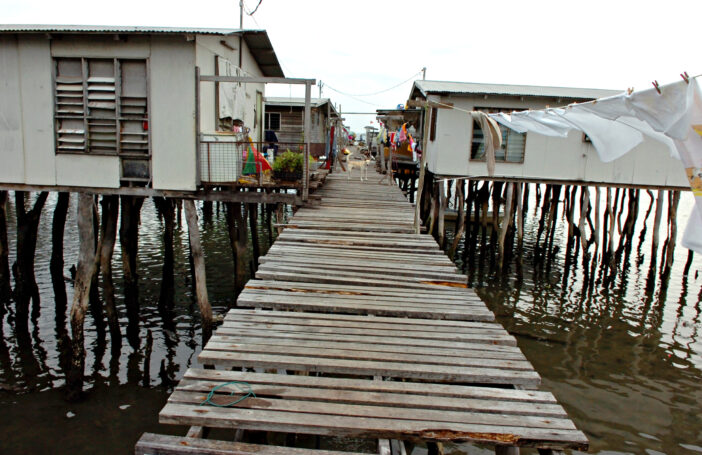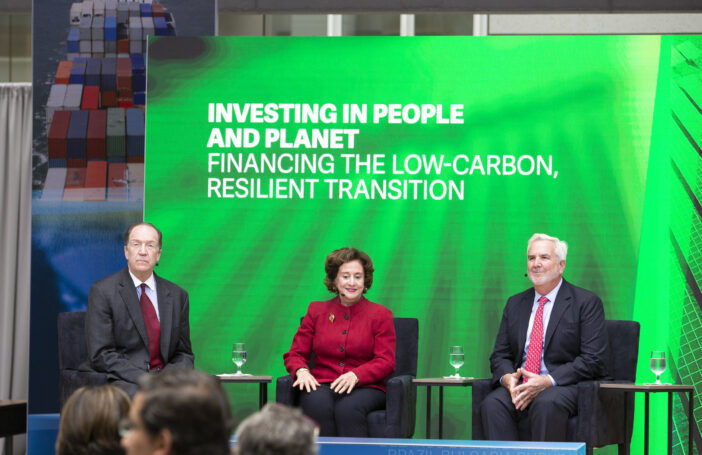Recent data shows that official development assistance (ODA, “aid”) is increasingly being spent as a form of climate finance. The OECD reported that climate finance increased from 21.7% of bilateral ODA in 2013 to 27.6% in 2021. Through the United Nations Framework Convention on Climate Change (UNFCCC) and its 2015 Paris Agreement, the nations of the world have committed to reducing climate change and its negative impacts.
Climate finance flowing from developed to developing countries is an important part of these international agreements. In late December 2022, Australia forwarded its Fifth Biennial Report to the UNFCCC, detailing its actions on climate change, and the Article 9, paragraph 5 report which is largely a rearrangement of the climate finance information in the Biennial Report. These reports are the main mechanism through which countries detail how they are implementing and reporting their climate finance commitments. This blog discusses some of the key issues that emerge from Australia’s most recent reports.
At the global level in 2009, developed countries had promised – collectively – to provide US$100 billion annually of support to developing countries by 2020 to help them to reduce their net greenhouse gas emissions and to adapt to climate change. This financing target was missed in 2020 and it is not confirmed whether it will be met by the end of this year. The unfulfilled commitment has further aggravated the North/South divide that plagues the Paris Agreement negotiations.
In addition to mitigation and adaptation, loss and damage has also been acknowledged in the wake of the 2022 UNFCCC COP27 decision to establish a dedicated fund to provide support for vulnerable countries in this area. This support aims to address the damage caused by climate change induced impacts that have not been alleviated through adaptation. Such damage can be caused by a range of events, from sudden, high intensity disasters like cyclones through to “slow-onset events” like recurring drought and sea level rise.
Some donors have also signed up to an ODA target of 0.7% of gross national income (GNI) as part of their commitments to help meet the 2030 Agenda for Sustainable Development and the accompanying Sustainable Development Goals (SDGs). For the most part, the same funding is counted towards the achievement of both the Paris Agreement global finance goal and the 2030 Agenda (SDG) ODA targets because almost all publicly funded climate finance provided to date also qualifies as aid. However, climate finance is supposed to be “new and additional” under the UNFCCC, although the term is yet to be defined. Developing countries have consistently argued against aid for climate finance being sourced from other priority sectors like education and health.
Turning to Australia’s most recent reporting on climate finance, the good news is that the 2022 Biennial Report confirms the doubling of this finance to $2 billion for the 2020 to 2025 period. The Pacific is to get $700 million of this funding. And while Australia has yet to commit any finance towards loss and damage, the government supported its inclusion in the outcomes of COP27 and it is a member of the UNFCCC’s Transitional Committee examining options for the establishment, financing and operations of the fund.
In 2021-22, Australia disbursed $449 million in climate finance out of a total ODA spend of $4.418 billion, or around 10% of ODA expenditure. In total, as at the end of the last financial year, DFAT reports that $989 million of the five-year, $2 billion commitment had been spent. The Biennial Report states that 70% of Australia’s bilateral and regional climate finance is directed towards adaptation, well above the UNFCCC adaptation target of 50%.
However, the transparency and accuracy of the government’s previous estimates of the volume of climate finance have been questioned – by both non-government organisations and aid experts – with some projects seemingly having little direct link to addressing climate change. And, for the period 2015 to 2020, just over half Australia’s climate finance consisted of disbursements to multilateral institutions.
Australia also has a questionable record on “new and additional”. The previous government openly admitted that its pledge of $1 billion was to be drawn from the existing aid budget. In the latest Biennial Report Australia restated that its climate finance is “new and additional” because it was included in the last federal budget. Using this definition almost all expenditure made by the Australian government, ranging from the provision of aged pensions to the acquisition of nuclear-powered submarines, is “new and additional”. Australia has the company of other developed countries which also use this dubious definition. It remains to be seen whether any future commitment to loss and damage funding will be sourced from within Australia’s existing climate finance pledge and/or existing ODA.
It is true that Australia’s climate finance does not all need to come from ODA, and some of it can come from private sources. In 2021-22, the estimate for private climate finance mobilised by Australia, as reported in the annual statistical summary of Australia’s ODA, was $126 million. This figure represents private finance mobilised by the Australian Climate Finance Partnership, which is administered by the Asian Development Bank, using OECD DAC methodologies. No quantitative estimate was reported in the latest Biennial Report but Australia will apply these methodologies in future reporting.
But it is aid diversion that will remain the critical challenge for Australia. As a result of the decisions made in the May 2023 budget, Australia’s ODA will still decline in real terms over the next few years and then, depending on actual inflation, will flatline until 2036-37. Australia’s ODA-GNI ratio fell from 0.36% in 2012 to 0.19% in 2022 and could fall to as low as 0.14% by 2036-37.
Like the rest of the world, the worsening climate crisis has meant that climate finance has become a much more prominent part of Australia’s overall development engagement, particularly in the Pacific. However, with Australia’s aid falling and then flatlining in real terms over the next 14 years, its current and future climate finance commitments will increasingly be accompanied by difficult trade-offs with our other development objectives and those of our partners.




